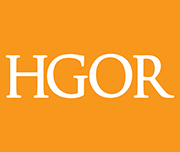Creating a Great Workplace Experience
Ongoing research into the evolution of knowledge work establishes a casual relationship between employees’ ability to focus and their productivity. Research proves that overall, the U.S. Workplace is improving year over year. Data and surveys conclude that the modern workplace is defined by its people and its culture – not by its products or services. Creating a great workplace experience requires a focus not just on space and effectiveness but it includes strategies that align space, culture, interaction, and behavior to create a workplace experience that optimizes people’s performance and is driven by high levels of balance and choice at work.
Flexibility
The workplace is becoming more choice-based and amenity-rich. According to Gallup’s 2019 Workplace Survey the amenities that deliver the greatest impact connect directly to people’s most important needs and preferences: spaces directly connected to innovation, making, and collaboration; and quiet places to perform focused or individual work. Amenities with a non-work focus that are versatile in their function – such as outdoor workspaces are impactful. When it comes to office campus design, one size does not fit all. It is proven that flexible work environments is key to success. For some, being in an open space inspires creativity; for others privacy and quiet are necessary for them to focus. In today’s workplace, employees want to choose how, when and where they work and flexibility breeds happier, more loyal employees who are inspired.
At Coca-Cola Headquarters, HGOR designed a series of courtyard spaces intended to support a flexible and broad range of experiences, social interaction, and programmable events at the company’s corporate headquarters in Atlanta, Georgia.
Coca-Cola Headquarters; Atlanta, GA
Connectivity
Collaboration and engagement with others stills drives innovation and productivity and connectivity is the cornerstone of a collaborative and productive workplace. Future Workplace, an HR advisory and research firm found evidence that dependency on technology makes workers feel isolated, disengaged and less committed to their organizations. Technology has created the illusion that workers are connected, when in reality they feel isolated and less committed to their organizations when overusing or misusing it. While remote workers gain freedom and flexibility, their study and research found that they are disengaged and less likely to want a long-term career with their company because of their lack of human contact. Today’s leaders need to use technology as a bridge to connection so that they can foster strong work cultures, where employee’s human needs are met and supported. The best way for them to do that is through team building activities, social events and workations where workers can get to know each other on a personal level. Creating spaces and opportunities where employees can connect will ultimately lead to a more productive, satisfying and rich working environment.
At Spring @8th – NCR Headquarters, HGOR designed a transparent and transformative green roof that fosters an open, engaged and highly collaborative culture that is organized around a central open gathering space so the amenity provides numerous opportunities for individuals or groups to take advantage of connecting and socializing.
Spring @8th – NCR Headquarters; Atlanta, GA
Wellness
There are strong correlations between employee performance and their overall well-being, benefitting employers to identify ways they can facilitate workers’ health. Addressing today’s community wellness requires a focus on all the spaces and experiences that make up our daily lives, using the provision and design of space to support positive behavior and contribute to health improvements. Researchers from the Society for Human Resources Management (SHRM) say that the solution to this problem is providing urban retreats to which workers can flock. These restorative locations for focus are integrated into the natural environment. They reclaim small pockets of outdoor public space; they provide focus space to mobile workers and tear down the walls between knowledge workers and outdoor stimuli. Research also suggests that employees in workplaces with access to the natural environment experience lower levels of job stress and higher levels of job satisfaction.
At Terraces, HGOR is currently repositioning and renovating the office complex terraces to create a virtual outdoor living room, where employees can work in gathering spaces around the Terraces’ three-acre lake to rejuvenate and regroup. All of the findings in this year’s survey point to the importance of culture.
The Terraces; Dunwoody, GA
All of the various findings in workplace research and surveys point to the importance of culture. Once the culture is identified then it is the role of the physical space and design to support the desired interactions. Findings show that employees desire flexibility, connectivity and recognition of their individuality. The best employers — with the happiest employees and the brightest future — are the ones who make it a point to listen and act to align space, culture, interaction, and behavior to create a high-performance workplace experience that optimizes people’s performance and is driven by high levels of balance and choice at work.



